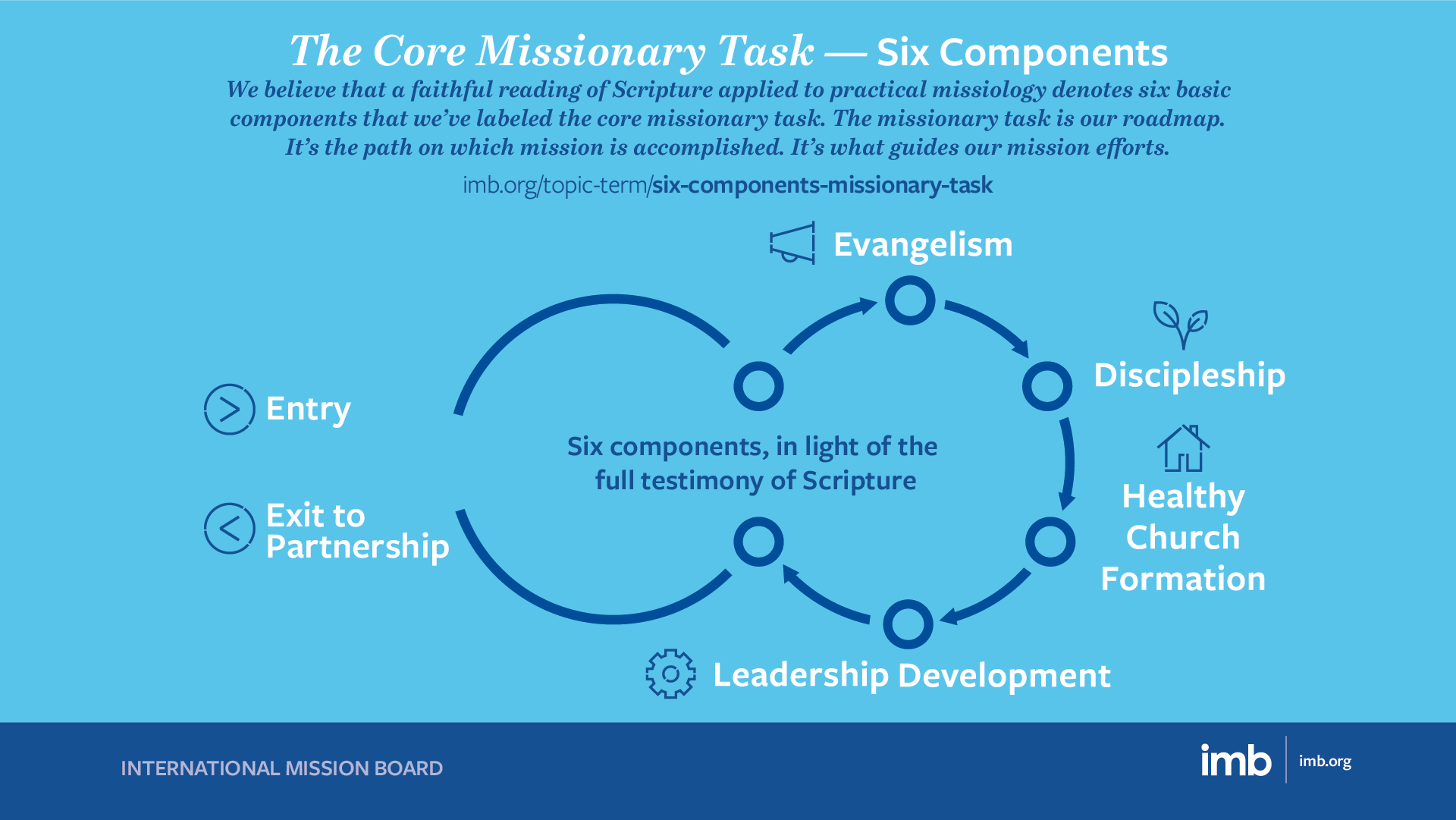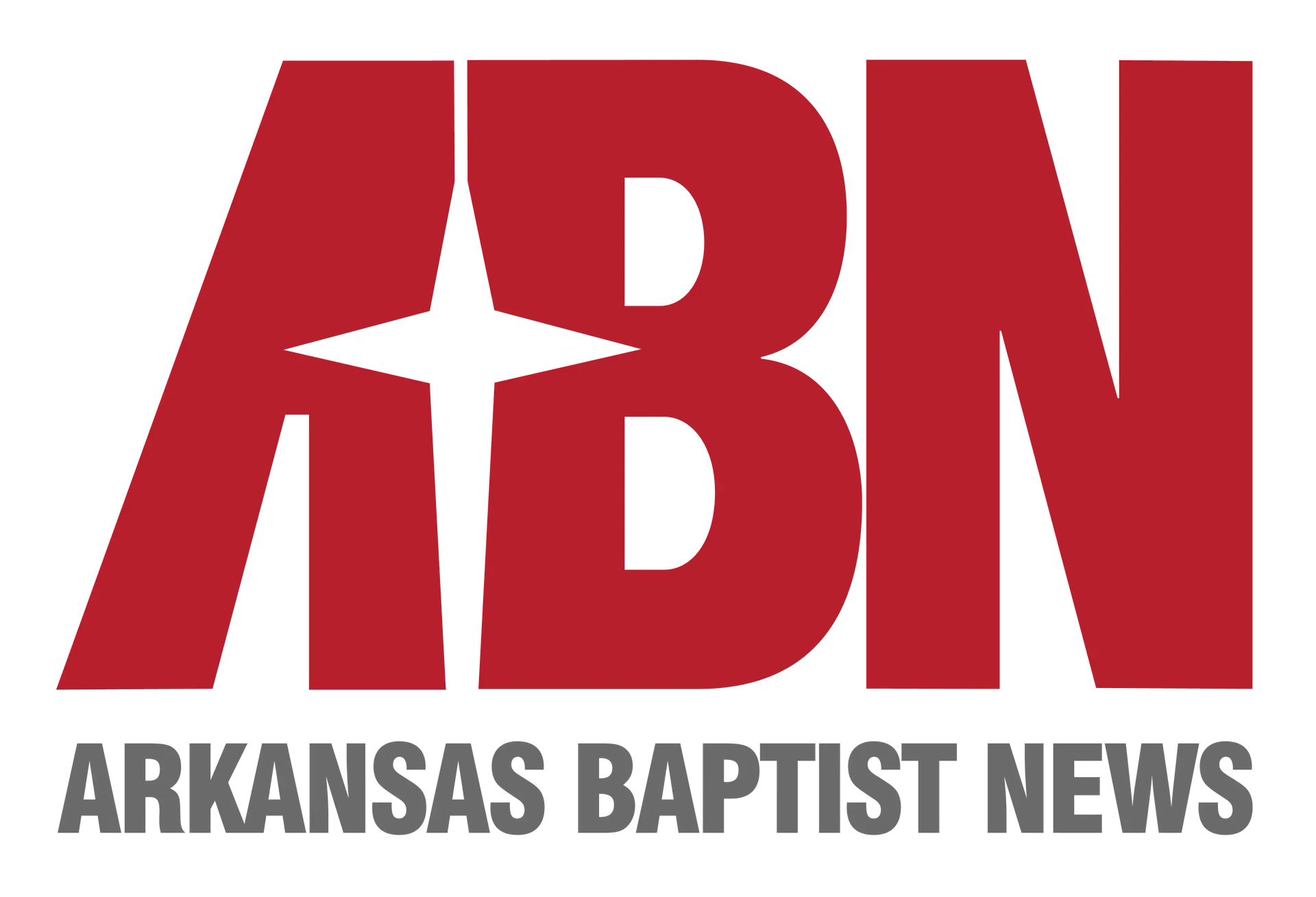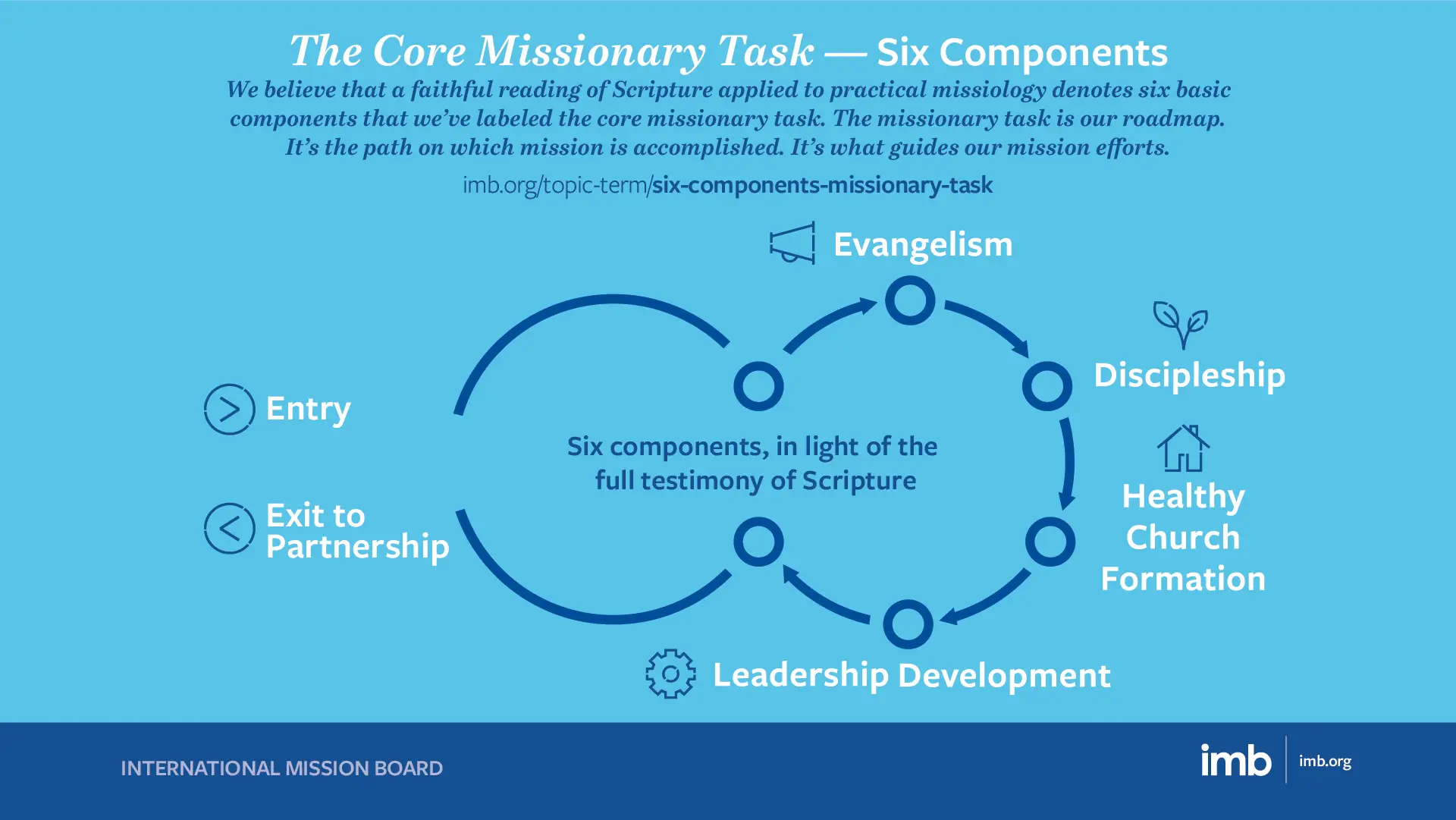[IMB] Editor’s note: This is the first post in a 12-part series that highlights information found in IMB’s Annual Statistical Report. The report is based on 2019 research data. A full copy of the report is available at imb.org/asr.
We believe that a faithful reading of Scripture applied to practical missiology denotes six basic components that we’ve labeled the core missionary task: entry, evangelism, disciple making, healthy church formation, leadership development, and strategically planned exit to partnership. We believe that all mission effort—whether exerted by missionaries or partnering churches—should focus along these lines.


In the entry phase of the missionary task, our goal is to find people in need of the gospel, find a means of access and learn the local language in order to communicate.

In the evangelism phase of the missionary task, we share the gospel in accordance with Scripture and with the knowledge that there is no salvation apart from hearing and believing the gospel.

In the discipleship phase of the missionary task, we mentor disciples who are expanding their knowledge of Scripture, experiencing transformation and developing skills in Bible study, prayer and evangelism.

In the healthy church formation phase of the missionary task, new churches are started to nurture and develop new Christians, provide a place of worship and fellowship and to facilitate the sending of church members to share the gospel with others.

In the leadership training phase of the missionary task, we seek to establish self-governing, self-supporting and self-propagating churches who understand, teach and obey the Word of God. To achieve this, we are to train leaders.

In the exit to partnership phase of the missionary task, we hand full responsibility over to local leaders who have been trained and equipped to lead their congregations. Partnership with churches can continue through visits, prayer, encouragement and coaching.
This article was originally published by the IMB at imb.org

